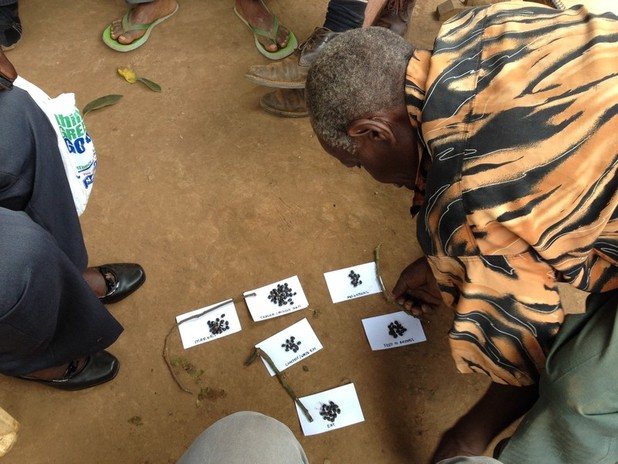February 04, 2014
Stacy Barnes and her IDEO.org team spend the first half of their fieldwork in Kenya to delve into the complex issue of post-harvest food spoilage and elaborate on some creative ways to make interviews more tangible.
We've just completed our first fieldwork in Kenya! Our IDEO.org team is collaborating with the Rockefeller Foundation to delve into the widespread problem of post-harvest food loss. Since the project kick off earlier this month, we’ve spent time in Nairobi, visited rural areas outside of the capital city, and even traveled to western Kenya for a few days to meet with farmers and other value chain actors. And to further broaden our scope, I'm writing this update as we head to Senegal for nine days to gain the perspective of a whole other region of farmers, processors, transporters, and organizations that are knowledgeable about the issue.
This past week and a half of research has revealed many nuances of the problem, so we are eager to further dig into our fieldwork in Senegal to see what patterns stick or slip. As always, we've had a high degree of success in gathering more honest and thoughtful responses from people when we bring tangible artifacts into our interviews. So we thought we’d bring to you a few highlights from these activities.
Sorting and ranking games
These are tried and true methods that allow us to see what people prioritize. We played multiple sorting games with individuals and groups to better understand what aspirations they have for their farms as well as what steps they believe they should take to get there. One shot above shows a farmer choosing to invest in a truck ahead of any other technology in order to be able to bring more goods to the market.
Making percentages tangible
Because we need to understand how much food is spoiling on the farm, during transport, and in the market, we devised a simple activity to help farmers show us. Using a handful of beans to represent their entire harvest, we asked each participant to partition the beans according to how many they sell, eat, or discard. This method instantly allowed people to show us an estimated percent of food that they are not able to utilize.
Intercepts & scales
It became clear after a few days in the field that we needed to talk with people who had not necessarily been prepped for our arrival. The reason being, we wanted to make sure farmers felt comfortable giving us honest answers, and that can sometimes prove difficult if an interviewee has been connected with us through another organization. In order to get around this problem we use a conduct what we call intercepts. This means walking around and talking to people about the issues in a relevant environment. Talking to complete strangers might seem intimidating to some but we absolutely love it! Doing it properly requires spontaneity, friendliness, honesty with whomever you are speaking too, and often times you must design your questions to be very simple and short. One lighting fast exercise we conducted was to draw a scale between 1 and 5 and ask different stakeholders (farmers, processors, market sellers, grocers, transporters and food distributors/buyers) to tell us how important the issue of post harvest loss was by circling the number on the scale that they feel represents the severity of the problem – 1 being not a problem and 5 being a very pressing problem. By doing this with various actors in the value chain we were able to unearth telling insights about who is most affected by the problem.
We’ll have more peeks into our research to come as we begin exploring the challenge of post-harvest food spoilage in Senegal!




